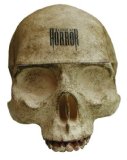| Reviews & Columns |
|
Reviews DVD TV on DVD Blu-ray 4K UHD International DVDs In Theaters Reviews by Studio Video Games Features Collector Series DVDs Easter Egg Database Interviews DVD Talk Radio Feature Articles Columns Anime Talk DVD Savant Horror DVDs The M.O.D. Squad Art House HD Talk Silent DVD
|
DVD Talk Forum |
|
|
| Resources |
|
DVD Price Search Customer Service #'s RCE Info Links |
|
Columns
|
|
|
Masters of Horror: Season Two Box Set
- Mick Garris
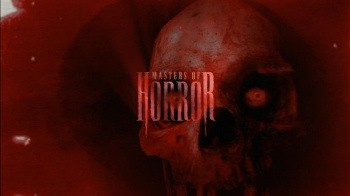
The SERIES
Resurrecting the horror anthology format in late 2005, Showtime gathered 13 directors (many of them genre big shots) to create hour-long episodes based on a variety of sub-genres. "I hope the future of horror takes some signals with what we're trying to do with Masters of Horror, successful or otherwise," notes executive producer and sometimes-writer/director Mick Garris. "We wanted to be varied, we wanted to be broad, and with horror fiction, with horror television, with horror features...that's where I hope the inspiration will be taken."
The second season brings us 13 more episodes, with seven directors returning from Season 1. The films arrive on 11 discs (two flippers: Family/The Screwfly Solution and Pro-Life/Pelts) in a nifty skull package. As expected, we get a wide range of horror--although there's no super-controversial episode ala Takashi Miike's Imprint this year. Save for the finale (Dream Cruise, which includes a longer cut), all of the discs appear to be the same as the previous individual releases. All of them have audio commentaries, and most of the discs include two behind-the-scenes features: a 12- to 15-minute "making of" feature, and a shorter one focusing on special effects or other production areas (sadly, no deleted scenes at all, and only one blooper reel). Garris is frequently joined by special make-up effects supervisors Howard Berger and Gregory Nicotero, visual effects supervisor Lee Wilson, production designer David Fischer, editor Andrew Cohen and director of photography Attila Szalov to provide behind-the-scenes nuggets.
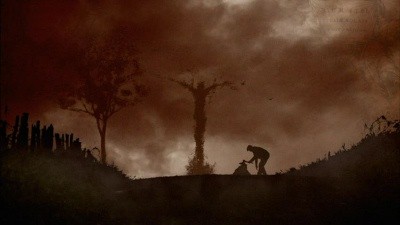
Most of the episodes are filmed within 10 days in Vancouver using primarily Canadian casts (save for two or three non-Canadian leads) and crews, and on relatively modest budgets. There are hits and misses here--a lot of the episodes struggle with the hour-long format, either stretching out material or trying to do too much. A lot of them also rely too much on humor and can't quite find the right balance; it doesn't work all the time, proving counterproductive to spooking you (is it too hard to go for straight scares these days?!). A trio of the episodes shine, wwith a few others providing decent watches--while others struggle to varying degrees with their ambition. Let's take a look at the shows...
The EPISODES
1. The Damned Thing ♦♦
Directed by Tobe Hooper; aired October 27, 2006; running time: 55:56
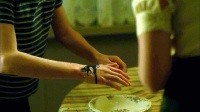
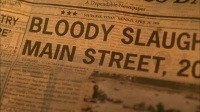
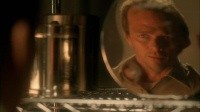
In the small Texas town of Cloverdale, sheriff Kevin Reddle (Sean Patrick Flanery) is haunted by an incident from his childhood--an unexplainable oil leak accompanied by strange behavior from his father--that claimed the life of his parents. Tired and haggard, he's further dejected by his separation from wife Dina (Marisa Coughlan), who has custody of their son (Alex Ferris). With the anniversary of the tragic event approaching, bad weather is once again causing some residents to act out on violent impulses, forcing the sheriff to face his past--and fight to save his family. Tobe Hooper does a decent job of building the tension and creating a spooky atmosphere with minimal resources (there's a Needful Things-like vibe to the town-gone-crazy story), and a few of the deaths are effective. But the ending--which reveals the "monster"--is a huge letdown, a cheesy effect that puts a damper on the film. I wish they opted to go for a more subtle approach, leaving it more to our imagination.
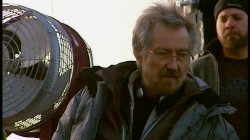 Behind the Scenes Featurettes: In Texas Terror (12:30), the cast and crew talk about the story and the film's creation, including its most controversial scene. In The DT: Building the Oil Monster (4:11), Mick Garris notes: "Tobe was nervous about it, because if the oil monster at the end doesn't work, then the movie doesn't work. It doesn't pay off. It's like having sex and not coming. In this case it was up to [visual effects supervisor] Lee Wilson to provide the orgasm." Uh...thanks, Mick! I agree, but I'm still waiting for my, um, payoff. For me, the ending didn't work at all. (A side note: Hooper is the only director from the entire season that doesn't participate in the extras.)
Behind the Scenes Featurettes: In Texas Terror (12:30), the cast and crew talk about the story and the film's creation, including its most controversial scene. In The DT: Building the Oil Monster (4:11), Mick Garris notes: "Tobe was nervous about it, because if the oil monster at the end doesn't work, then the movie doesn't work. It doesn't pay off. It's like having sex and not coming. In this case it was up to [visual effects supervisor] Lee Wilson to provide the orgasm." Uh...thanks, Mick! I agree, but I'm still waiting for my, um, payoff. For me, the ending didn't work at all. (A side note: Hooper is the only director from the entire season that doesn't participate in the extras.)
Audio Commentary: Writer R.C. Matheson provides the track, a decent listen where he shares a different ending (for the last few shots) that I think would have been better.
Other Extras: photo gallery, Tobe Hooper text bio, DVD-ROM script, trailers
Another DVDTalk review for The Damned Thing
2. Family ♦♦♦
Directed by John Landis; aired November 3, 2006; running time: 56:35
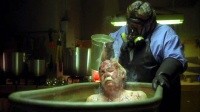

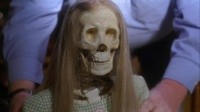
From the opening shot, we know that mild mannered Harold Thompson (George Wendt) is a little cuckoo. How else to explain him pouring acid onto an old man, burning off the skin so he can preserve the skeleton to add to his growing "family"? He's also got a wife and daughter, with more on the way. But when a new couple (Meredith Monroe and Matt Keeslar) moves in next door to his middle class Wisconsin home, a crush has Harold setting his sights on a new wife...which doesn't make wife No. 1 very happy. Because this comes from John Landis (Animal House, An American Werewolf in London and the ill-fated Twilight Zone: The Movie, which I still can't believe landed the director no jail time...but I digress), you can guess the tone of this entry. It's a dark comedy more than a horror film, and even with its familiarity it still works. Wendt is perfectly cast, and the story unfolds with ghastly, playful humor that keeps it light-hearted through the shocks. More than any of the episodes this season, Family comes closest to channeling the Tales From the Crypt vibe, a colorful comic book come to life.
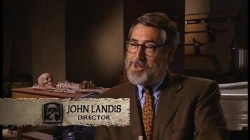 Behind the Scenes Featurettes: Skin and Bones (15:28) is one of the more entertaining "making of" segments in this set. Writer Brent Hanley notes how this is "my 60-minute version of Psycho...that's what we really modeled it after." The always enthusiastic Landis shares how developing characters you care about is his priority, and notes that he played with the camera more than he normally does. Terror Tracks: Mastering the Family Score (7:20) is an interesting look at how Landis collaborated with composer Peter Bernstein to create the effective score, which fits the material perfectly.
Behind the Scenes Featurettes: Skin and Bones (15:28) is one of the more entertaining "making of" segments in this set. Writer Brent Hanley notes how this is "my 60-minute version of Psycho...that's what we really modeled it after." The always enthusiastic Landis shares how developing characters you care about is his priority, and notes that he played with the camera more than he normally does. Terror Tracks: Mastering the Family Score (7:20) is an interesting look at how Landis collaborated with composer Peter Bernstein to create the effective score, which fits the material perfectly.
Audio Commentary: Hanley (the self-described "sick fuck responsible for the story") provides the track, and his deep, laid-back southern voice provides frequently funny comments, although he doesn't have too much information about the development of the film outside of his inspiration/writing process. Hanley wrote the horror hit Frailty in 2001, and this is his first foray back into film. Here's hoping we see more of his work in the future.
Other Extras: photo gallery, original storyboards by William David Hogan, John Landis text bio, DVD-ROM screenplay, trailers
Another DVDTalk review for Family
3. The V Word ♦♦½
Directed by Ernest Dickerson; aired November 10, 2006; running time: 57:11
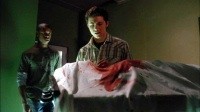
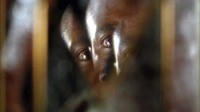
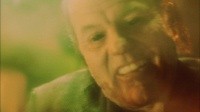
Best friends Justin (Branden Nadon) and Kerry (Arjay Smith) like to bide their time playing violent video games, but one night Justin has a new idea: He dares Kerry to visit the funeral home where Justin's cousin works in an effort to see the dead body of a recently deceased classmate. Kerry reluctantly agrees, and the two head to the home--which seems mysteriously empty. But the two stumble upon some ominous clues that indicate they aren't alone, and what they first think is a prank turns into an all-too-real nightmare. I don't want to share too much beyond that, because this wacky entry goes into a new direction and squeezes a lot into one hour. It's an ambitious effort, and shares a little with Phantasm, a little with Return of the Living Dead. Director Ernest R. Dickerson maybe tries to do too much, but it's never boring. Like many entries this season, The V Word relies on plenty of comedic elements (Michael Ironside hams it up in a supporting role), which sometimes work. This film aims for a parallel with video games and how they desensitize kids to violence, but it's not explored enough to be anything more than a passing notion. Frequently flawed, this is still entertaining.
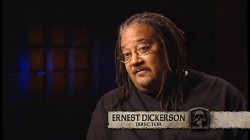 Behind the Scenes Featurettes: In Feeding Frenzy (13:34), Ironside notes: "To deal with this kind of subject matter, you have to have a sense of play, you have to have a child-like--not childish--but child-like sensibility, and Ernest has that." The segment also shows brief (and cute!) footage of Smith as a kid, dressing up like a vampire for Halloween. In Bite Me! Mastering the Neck Wound (5:50), Howard Berger says he wanted to so something a little different with a classic monster: "I didn't want the vampires to bite. I'm tired of the whole biting thing...done it a million times, actors wearing dentures, it impedes their speech."
Behind the Scenes Featurettes: In Feeding Frenzy (13:34), Ironside notes: "To deal with this kind of subject matter, you have to have a sense of play, you have to have a child-like--not childish--but child-like sensibility, and Ernest has that." The segment also shows brief (and cute!) footage of Smith as a kid, dressing up like a vampire for Halloween. In Bite Me! Mastering the Neck Wound (5:50), Howard Berger says he wanted to so something a little different with a classic monster: "I didn't want the vampires to bite. I'm tired of the whole biting thing...done it a million times, actors wearing dentures, it impedes their speech."
Audio Commentary: Dickerson is joined by writer Mick Garris, and both talk a lot about their influences and casting. Garris also shares how this was based on his own Halloween visit to a mortuary.
Other Extras: photo gallery, DVD-ROM script, trailers
Another DVDTalk review for The V Word
4. Sounds Like ♦♦
Directed by Brad Anderson; aired November 17, 2006; running time: 56:28
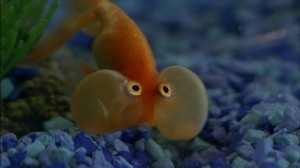
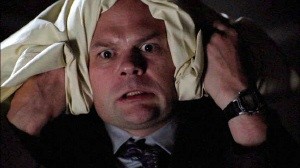
In the wake of his son's death, call center supervisor Larry Pearce (Chris Bauer) has dived into depression. He's also developed super-sensitive hearing, which is starting to drive him mad--and making him short tempered with his employees. Sounds from every environment start to invade his mind, and Larry tries to seek silence to stay sane. After developing an unhealthy attachment to a young worker who reminds him of his son--and after getting surprising news from his wife--Larry starts to go over the deep end: "Most people are afraid to listen," he says. "They think if they do, they might hear what's behind all the noise: silence. Silence scares them. Like if noise is the sound of life, then somehow silence must be the sound of..." This is a well-made film, but there's not nearly enough material to maintain a full hour. The story is highly repetitive, and takes too much time reinforcing Larry's torment with slow scenes that hammer home the loud sounds in his head (although a few of them are effectively gross). It's boring for a long time, and even though Brad Anderson provides some solid shots, you'll know exactly how it's going to end. This would have had a lot more punch with half the running time.
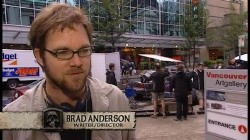 Behind the Scenes Featurettes: In Aural Madness (12:21), Anderson says that he "wanted to do a story that was more sound-driven than image driven." It's a decent look at the production. A Cacophony of Sounds Like... (5:16) takes a closer look at the sound effects, and also includes a brief look at a set visit by MOH contest winners.
Behind the Scenes Featurettes: In Aural Madness (12:21), Anderson says that he "wanted to do a story that was more sound-driven than image driven." It's a decent look at the production. A Cacophony of Sounds Like... (5:16) takes a closer look at the sound effects, and also includes a brief look at a set visit by MOH contest winners.
Audio Commentary: Anderson talks about using sound as a central element in the story, and talks about the visual transitions he used between scenes.
Other Extras: photo gallery, DVD-ROM script, trailers
Another DVDTalk review for Sounds Like
5. Pro-Life ♦♦
Directed by John Carpenter; aired November 14, 2006; running time: 55:27
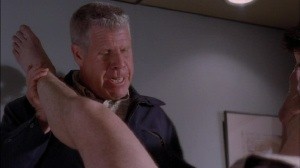
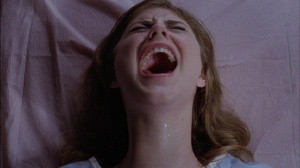
John Carpenter gives us an alternate version of his own Assault on Precinct 13, with the police station now a women's clinic. When two doctors (Mark Feuerstein and Emmanuelle Vaugier) nearly run down a scared girl (Caitlin Wachs) on the street, they take her to the clinic to make sure she's okay. But they soon discover she's pregnant, with an aggressive belly that's growing fast. Meanwhile, her conservative dad (Ron Perlman) demands her release. When his wishes aren't met, he uses his three sons to break in and take over, but what's soon released from his daughter's womb proves to be a problem for everyone. Despite a somewhat accomplished cast and lofty ambitions, Pro-Life doesn't hold up to its promise in the latter half. While it hints at being a message movie, it wimps out on drawing parallels to the bigger issue at hand, morphing into a silly monster movie that ruins the far scarier real-world terror it started with. It becomes tedious, not helped by the repetitive score (an incessant "ticka ticka ticka" sound reminiscent of Carpenter's own Halloween score) that tries to fake the tension. A few plot strands are left unfinished, but worst of all is Perlman's problematic performance and the lifeless acting by his sons (Perlman has zero emotional reaction when one of them is near death!). And fans of Carpenter's The Thing may be insulted by a knock-off creature. This has a promising start, but quickly fizzles--although one memorable "procedure" may make you squirm just enough to enjoy the experience.
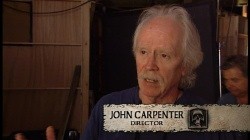 Behind the Scenes Featurettes: In Final Delivery (14:20), everyone makes sure we understand this isn't a message movie. "It's not about us trying to oppose any sort of political messages. It's a monster movie," says make-up effects man Gregory Nicotero. "We're not pro-choice, we're not pro-life. We're pro-monster." Perlman notes that his character was hard for him to understand, while many of the cast and crew praise Carpenter's talents and vision. We also get a brief glimpse (and shout out) from the man under the big monster suit: Derek Mears, who will soon be seen on the big screen as Jason Vorhees in the Friday the 13th remake. Baby Steps: Birthing the FX Sequence (5:24) looks at the effects, including some funny footage of Vaugier getting a yucky facial. Notes Nicotero: "One of the iconic visions that John Carpenter is responsible for is the spider head from The Thing, so we didn't want to repeat something that John had done in the past. We wanted it to look a little different." But it's not nearly different enough to avoid comparison.
Behind the Scenes Featurettes: In Final Delivery (14:20), everyone makes sure we understand this isn't a message movie. "It's not about us trying to oppose any sort of political messages. It's a monster movie," says make-up effects man Gregory Nicotero. "We're not pro-choice, we're not pro-life. We're pro-monster." Perlman notes that his character was hard for him to understand, while many of the cast and crew praise Carpenter's talents and vision. We also get a brief glimpse (and shout out) from the man under the big monster suit: Derek Mears, who will soon be seen on the big screen as Jason Vorhees in the Friday the 13th remake. Baby Steps: Birthing the FX Sequence (5:24) looks at the effects, including some funny footage of Vaugier getting a yucky facial. Notes Nicotero: "One of the iconic visions that John Carpenter is responsible for is the spider head from The Thing, so we didn't want to repeat something that John had done in the past. We wanted it to look a little different." But it's not nearly different enough to avoid comparison.
Audio Commentary: Carpenter is joined by writers Drew McWeeny and Scott Swan, who reinforce that they tried to straddle the political fence. The track is highlighted by a seven-minute walk-out from Carpenter, who leaves for a cigarette break (!).
Other Extras: photo gallery, John Carpenter text bio, DVD-ROM script, trailers
Another DVDTalk review for Pro-Life
6. Pelts ♦♦♦½
Directed by Dario Argento; aired December 1, 2006; running time: 57:04
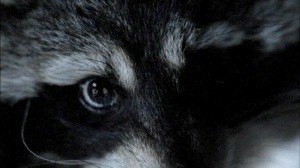
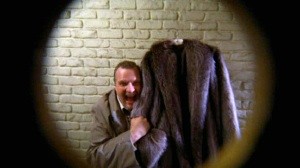
Which sounds scarier to you: raccoons, or the acting of Meat Loaf? Yeah, I pick Meat Loaf, too. But while his lead performance is a little too hammy (tee hee!), Dario Argento is thankfully more than up to the task to pull off the raccoon spooks. Meat Loaf plays mean fur trader Jake Feldman, who gets tipped off to some amazing pelts by a doomed father/son pair (John Saxon--reunited with Argento after Tenebre--and Michal Suchánek). The powerful pelts put people under their spell, making their victims do some horrifying things. The secret lies in the lair of old Mother Mayter (Brenda McDonald), who tries to warn people about her creepy critters. But when Jake tries to impress exotic dancer Shana (Ellen Ewusie) with his find, things get out of hand fast. Argento supplies a few nature motifs that echo his oddity Phenomena, and despite its almost laughable premise, this is one of the season's strongest efforts. There's a gleeful excess here, and the ending is a highly entertaining exercise in over-the-top mayhem. Argento is all about visuals, and he doesn't disappoint here, supplying plenty striking shots that are a feast for the eyes (and Claudio Simonetti's score is also a treat). This is one of the more colorful entries (both visually and in tone), and one of the most re-watchable.
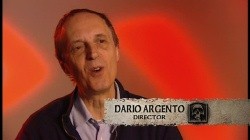 Behind the Scenes Featurettes: "This one is a fairly classic movie overall, in spite of all the oddness. It's a strange movie," says Argento in Fleshing it Out (12:52), one of the best "making of" treatments of the set. "It's our 'wet' episode this year," notes Mick Garris, adding that it is in some way cartoonish, but gruesome and erotic in a fun way. "It's a very wet, very bloody episode, and I love it." The cast and crew talk about Argento's passion and excitement on set. All Sewn Up: Mastering the Effects Sequence (7:16) looks at a memorable scene.
Behind the Scenes Featurettes: "This one is a fairly classic movie overall, in spite of all the oddness. It's a strange movie," says Argento in Fleshing it Out (12:52), one of the best "making of" treatments of the set. "It's our 'wet' episode this year," notes Mick Garris, adding that it is in some way cartoonish, but gruesome and erotic in a fun way. "It's a very wet, very bloody episode, and I love it." The cast and crew talk about Argento's passion and excitement on set. All Sewn Up: Mastering the Effects Sequence (7:16) looks at a memorable scene.
Audio Commentary: Screenwriter Matt Venne supplies the track, which is a great listen--even if he sounds like he's reading it all off a pre-written essay. He has a lot to talk about, with many of his comments directed at aspiring screenwriters. Venne also notes what changes he made to the short story, and shares his admiration for Argento. It's a full, informative track.
Other Extras: photo gallery, original storyboards by John Lund, Dario Argento text bio, DVD-ROM script, trailers
Another DVDTalk review for Pelts
7. The Screwfly Solution ♦♦½
Directed by Joe Dante; aired December 8, 2006; running time: 58:02
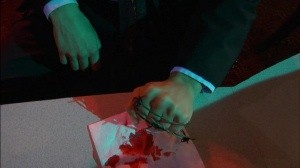
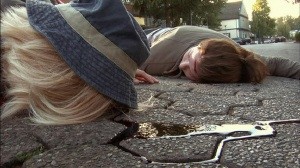
The most ambitious episode of the season, this entry revolves around the mysterious violent behavior that men are starting to exhibit against women across the world. Outbreaks are occurring along an inter-tropical convergence zone--something interacting with chemicals is triggering outbursts brought on by sexual arousal. Scientists Alan (Jason Priestley) and his uncle Bernie (Elliott Gould) investigate the epidemic, as does friend Bella (Linda Darlow, one of the strongest performers of the entire season), who heads to one of the hot spots: Jacksonville, Florida. Alan starts to worry how he might eventually treat his wife Anne (Kerry Norton, the lead) and daughter Amy (Brenna O'Brien). It's a big story with big goals, and for a while it works. Director Joe Dante handles the scope pretty well using small resources, but as happens so often with these episodes, the ending just doesn't work. We're given a weak explanation that seems like a quick fix that ruins the build-up (why do we always have to be fed clear-cut endings?!), made all the worse by cheap effects. This is one of the few episodes that would benefit with a feature-length running time.
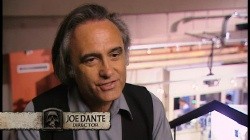 Behind the Scenes Featurettes: In The Cinematic Solution (9:52), we learn that Dante originally wanted to do this story--written in the '70s--as a feature in the 1980s. "Horror movies are essentially about absurd subjects," he says. "It's always nice to find humor and intelligence in this genre." Priestly calls it an allegory for a lot of things human beings do to the planet, while Garris concurs that the story is very ambitious for an hour program. He adds that Dante rarely uses extreme violence or nudity in his films (which can't be said here). The Exterminators (4:30) centers on the effects in the ending.
Behind the Scenes Featurettes: In The Cinematic Solution (9:52), we learn that Dante originally wanted to do this story--written in the '70s--as a feature in the 1980s. "Horror movies are essentially about absurd subjects," he says. "It's always nice to find humor and intelligence in this genre." Priestly calls it an allegory for a lot of things human beings do to the planet, while Garris concurs that the story is very ambitious for an hour program. He adds that Dante rarely uses extreme violence or nudity in his films (which can't be said here). The Exterminators (4:30) centers on the effects in the ending.
Audio Commentary: Dante is joined by screenwriter Sam Hamm, the same duo responsible for Season 1's Homecoming. Hamm notes that it was difficult to do everything in a one-hour show, while Dante notes some minor flubs (including pointing out a few moments where some actors flubbed lines).
Other Extras: photo gallery, Joe Dante text bio, DVD-ROM script, trailers
Another DVDTalk review for The Screwfly Solution
8. Valerie on the Stairs ♦ ½
Directed by Mick Garris; aired December 21, 2006; running time: 58:12
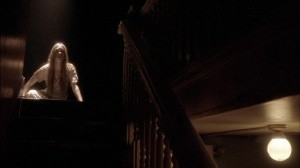
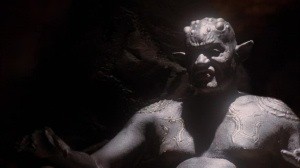
Executive producer Mick Garris offers his directorial effort for the season, and despite working off a story by one of the true masters of horror (Clive Barker) this is one of the weakest of the bunch. Struggling writer Rob Hanisey (Tyron Leitso) arrives at Highburger House, a commune for down-on-their-luck writers to find their footing (and inspiration) before heading back out into the world. Rob, who has never been published, takes the room of a suicide victim. He soon befriends Bruce (Jonathan Watton), but clashes with everyone else, including Patricia (Suki Kaiser, doing a horrible southern accent). But Rob starts to have visions, seeing a mysterious woman named Valerie (Clare Grant) who cries out for help, only to be pulled away by a controlling demon (Tony Todd). Is he dreaming, or is there something more sinister at work? The answer may lie with Everett (Christopher Lloyd), whose old horror novel was adapted into a movie with strikingly similar characters. Despite some intriguing ideas, this winds up being a collection of themes done better elsewhere. The hardest scenes to take seriously involve Todd trying to act tough; he's just not scary draped in full-body make-up that accentuates some not-so-toned areas. It frequently looks like an amateur stage play: Some characters enter the frame so clumsily, with a matter-of-fact approach in scenes that are meant to be powerful. And the final twist (which you'll probably see coming) is handled with cheap visuals.
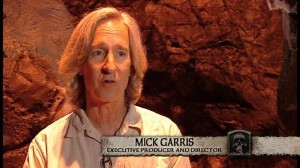
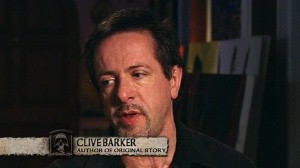
Behind the Scenes Featurettes: It's nice to see Clive Barker take part in Spine Tingler (14:12), and it becomes clear that a lot of his ideas where changed to work with the project's small budget: "The world 'horror' is just a sticky label," notes the master. "If they're great stories, people will come, and if you tell them some dark truths along the way, all the more fun." Garris talks about his film style and shooting philosophy: "I don't like to see things directly at eye level. I like to look up or I like to look down. I think it gives you a sense of other-worldliness." Jump Scare; Editing Valerie (5:00) takes a closer look at the editing process with Andrew Cohen: "Every horror film has to have at least one jump scare. Valerie has four or five, and it's sort of fun for the viewer to anticipate where they are." (I don't agree--at least not here--as I found the jumps telegraphed).
Audio Commentary: Garris provides a likeable track, expanding upon some of the adjustments he had to make, calling it "an internal story made external." But I don't think he achieved his goal of making the demon chilling, arresting and erotic, one of the film's biggest downfalls.
Other Extras: photo gallery, Mick Garris text bio, DVD-ROM script, trailers
Another DVDTalk review for Valerie on the Stairs
9. Right to Die ♦♦♦½
Directed by Rob Schmidt; aired January 5, 2007; running time: 56:35
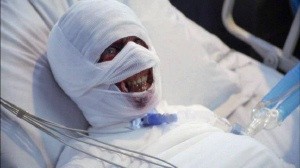
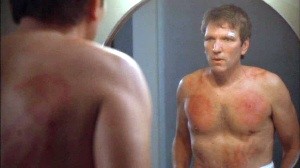
Back in 2003, director Rob Schmidt gave us what I consider an underrated gem in the horror world: Wrong Turn, a brutally fun creeper that proudly wore its 1970s influences. Why it has taken four years to see him direct again, I have no idea, but I hope we get plenty more of his work in the future. Right to Die is one of this season's highlights, and one of the few episodes that uses the hour-long format perfectly. It's funny, but not in a way that detracts from the gory, creepy action. Martin Donovan gives a perfect performance (restrained, ironic and hysterical) as Cliff Anderson, who is having an affair but wants to patch things up with wife Abby (Julia Anderson). But when a car crash leaves her a in a coma burned beyond recognition, Cliff thinks its time to pull the plug, with greedy lawyer Ira (Corbin Bernsen) ready to give a helping hand. But some strange things start to happen when she flatlines--she pays a visit to those who have wronged her, only to be repeatedly brought back to life by doctors. It starts to drive Cliff crazy, and the bloody action heats up in this immensely fun ride that strikes a perfect balance between horror and humor, with some gross visuals standing out.
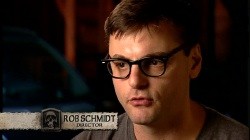 Behind the Scenes Featurettes: Burnt Offerings (14:05) is one of the more entertaining "making of" features, featuring funny anecdotes and quotes from the cast and crew (and some slight bad taste moments, as writer John Esposito describes his pitch as "Terry Schiavo meets Scott Peterson"). Schmidt notes that all of the characters here are flawed, sneaky and unlikable, which is part of the fun--and it's clear why the director admires Donovan's deadpan, dry delivery (a trait they share). Notes the actor: "I don't really delve into the heinousness of it...I can't as an actor." It ends with a great Bernsen moment. Flay-O-Trish (5:09) looks at some of the yucky effects.
Behind the Scenes Featurettes: Burnt Offerings (14:05) is one of the more entertaining "making of" features, featuring funny anecdotes and quotes from the cast and crew (and some slight bad taste moments, as writer John Esposito describes his pitch as "Terry Schiavo meets Scott Peterson"). Schmidt notes that all of the characters here are flawed, sneaky and unlikable, which is part of the fun--and it's clear why the director admires Donovan's deadpan, dry delivery (a trait they share). Notes the actor: "I don't really delve into the heinousness of it...I can't as an actor." It ends with a great Bernsen moment. Flay-O-Trish (5:09) looks at some of the yucky effects.
Audio Commentary: Schmidt provides some dry wit of his own in this humorous effort, one of the better commentaries on the set. One of many funny moments comes with a bathtub scene that everyone will stop and stare at, given the extremely huge, extremely intoxicating, almost mesmerizing breasts of Anderson. Like Schmidt, I am not a breast man...but good for you, Julia!
Other Extras: photo gallery, DVD-ROM script, trailers
Another DVDTalk review for Right to Die
10. We All Scream for Ice Cream ♦
Directed by Tom Holland; aired January 12, 2007; running time: 55:53
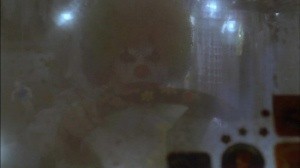
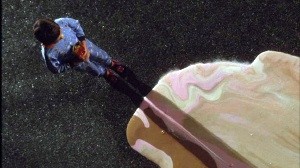
I love a good kid-prank-gone-wrong-comes-back-to-haunt-you-as-an-adult story just as much as anyone, but a killer clown who uses deadly ice cream to magically make his victims disintegrate into melted strawberry/vanilla goo? Come on! Along with The Washingtonians, this requires a big leap of faith by the viewer, but the payoff never comes. As kids, the six members of the West End Bunch made fun of mentally challenged ice cream man Buster (William Forsythe, who probably wanted to be unrecognizable), eventually causing his death. As adults, the men--who seem to vary in age a little too much--are mysteriously dying. It seems that when their own children bite into one of ghostly Buster's ice cream treats, it causes daddy to literally fall apart, their body becoming a mush of blood and chocolate. Layne (Oz's Lee Tergesen) has always regretted his involvement in the childhood prank (although his completely unemotional apology at the end ruins any sense of meaning in the story), but it may be too late to save himself--and his family. No matter how hard I try, I just don't see anything spooky about an ice cream truck housing a catchphrase-spewing killer clown surrounded by fog. There's something very Scooby-Doo about it all, including the anything-but-scary death scenes. The kid actors here are pretty bad, and some of the scenes are lazily constructed, like the truck's supposedly spooky arrivals. There's also some character confusion, leading to equally disjointed death scenes. The movie takes itself just seriously enough when it should go for broke, a surprise considering this comes from the director of the much better Child's Play and Fright Night.
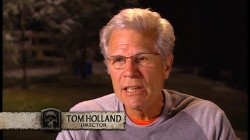 Behind the Scenes Featurettes: In Sweet Revenge, writer David J. Schow is joined by cast and crew members for an okay outing. Special effects man Howard Berger notes that the key to Forsythe's performance was over-exaggerating his lines and expressions, given that the actor was buried under makeup. Melt Down: The Scoop on Visual and Make-Up Effects (7:35) takes a closer look at the delectable grossness.
Behind the Scenes Featurettes: In Sweet Revenge, writer David J. Schow is joined by cast and crew members for an okay outing. Special effects man Howard Berger notes that the key to Forsythe's performance was over-exaggerating his lines and expressions, given that the actor was buried under makeup. Melt Down: The Scoop on Visual and Make-Up Effects (7:35) takes a closer look at the delectable grossness.
Audio Commentary: Holland and Schow pair up for a not-so-fluid commentary. Schow takes the lead and is more engaging; Holland come across a tad removed from it all, and you get the sense it was more of a paycheck than a passion play: "The reason that I wanted to do it, or agreed to do it, was because I thought it had a universal appeal." Can you feel the love?
Other Extras: photo gallery, DVD-ROM script, trailers
Another DVDTalk review for We All Scream for Ice Cream
11. The Black Cat ♦♦♦♦
Directed by Stuart Gordon; aired January 19, 2007; running time: 56:48
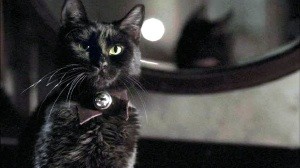
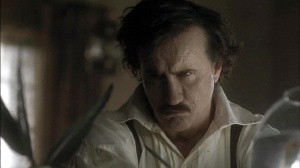
The highlight of the Season 2 set, this entry from Stuart Gordon is a beautifully crafted blend of fact and fiction. Using Edgar Allen Poe's short story of the same name as the basis, writers Gordon and Dennis Paoli have injected Poe's own life into the film. Jeffrey Combs is fantastic as Poe (turning in the singular best performance of the season, with Martin Donovan close behind), who is suffering through writer's block while also caring for his sick wife (/cousin) Virginia (Elyse Levesque) in 1843 Philadelphia. As her bout with the "white plague" (tuberculosis) intensifies, Poe drinks his way through depression--all the while increasingly tormented by their black cat Pluto, who is equally protective of Virginia. Poe's grip on sanity loosens, leading to some drastic actions and consequences. This is a slower story that shines with its simplicity. No one here is trying too hard to impress you, a nice change from all of the other episodes this season. The pacing is perfect, and Combs is a joy to watch, losing himself in the role. Gordon relies just as much on mood and an increasingly tense tone to creep you out, which makes some of the simpler shocks far more effective than the fancy effects (and you still get some of those, too). The ending is unlike any of the other ones this year, a welcome change of pace.
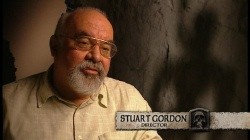 Behind the Scenes Featurettes: In The Tell-Tale Cat (13:49), Gordon talks about his inspiration for the piece (reading Poe to his daughter's class), noting that while many films have been based on the story, none were truly faithful to the original work--all you see here is based on the short story or taken from events in Poe's life. We also see Combs get a new nose (think Nicole Kidman in The Hours), while editor Marshall Harvey talks about the film's subdued color scheme (it's almost a black-and-white film, with a few bursts of color). In addition, you get an amusing look at the cat work (7 were used), which Combs notes "got more respect on the set." Bringing Down the Axe. (5:38) looks at some of the effects used.
Behind the Scenes Featurettes: In The Tell-Tale Cat (13:49), Gordon talks about his inspiration for the piece (reading Poe to his daughter's class), noting that while many films have been based on the story, none were truly faithful to the original work--all you see here is based on the short story or taken from events in Poe's life. We also see Combs get a new nose (think Nicole Kidman in The Hours), while editor Marshall Harvey talks about the film's subdued color scheme (it's almost a black-and-white film, with a few bursts of color). In addition, you get an amusing look at the cat work (7 were used), which Combs notes "got more respect on the set." Bringing Down the Axe. (5:38) looks at some of the effects used.
Audio Commentary: Gordon and Combs team up for a great listen, which is just as much a history lesson as it is a film study.
Other Extras: photo gallery, Stuart Gordon text bio, DVD-ROM script, trailers
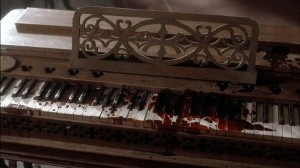
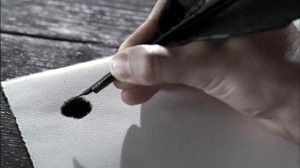
Another DVDTalk review for The Black Cat
12. The Washingtonians ♦½
Directed by Peter Medak; aired January 26, 2007; running time: 55:57
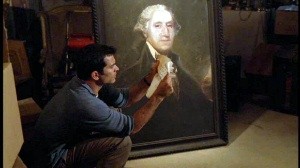
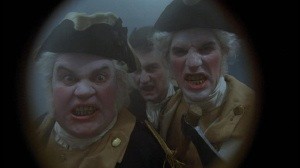
Okay, stay with me: When Mike Franks (Johnathon Schaech) heads to the Virginia home of his recently deceased grandmother with his wife and daughter, he finds a scroll hidden behind the canvas of a painting of George Washington in the basement. The diary indicates that the first president had a taste for human flesh, with children being a particular delicacy. That might explain the freaky Revolutionary War-inspired killers roaming the streets at night ala The Headless Horseman (but with heads...although I can't say the same for their victims). Are they ghosts? And why do so many of the elder townspeople act so darn weird around kids? Mike's professor friend (Saul Rubinek) may hold the key to all the strangeness. Peter Medak works off a screenplay by Schaech and Richard Chizmar, who adapted it from a short story. It's a crazy idea that requires perfect execution to work, and it doesn't come close. I appreciate the effort, but the villains here come across like a bad Monty Python sketch on acid--hardly something that inspires even an ounce of dread (especially in the supposedly shocking finale). Exaggerated expressions, bad teeth, ghostly makeup, crazy wigs, Jack Nicholson impressions...it just doesn't work, and it's not nearly funny enough to succeed as a comedy. And even though I might go to hell for saying this, daughter Amy (Julia Tortolano) is written so annoying, you'll almost wish for her to get eaten (well, maybe just an arm). The writers aim for a deeper message about government cover-ups and fictionalized history, but that's not explored enough to pack a punch. One of the weaker episodes of the season, this is slightly more watchable than the other stinkers due to its sheer audacity.
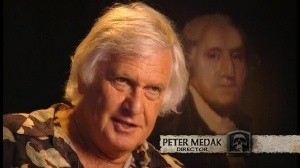
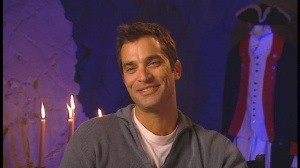
Behind the Scenes Featurettes: Schaech's engaging smile is almost enough to win you over in Feast on This (12:48), a decent "making of" entry. Says Rubinek: "The premise itself is kind of ridiculous, but once you take ridiculous premises and you treat them with all seriousness, even though they're absurd you end up with a kind of wonderful horror." Eh...not so much. In Wigs, Teeth and Powder! (6:54), Medak notes "The make-up is very important in the story...it can't be laughable; it has to be realistic." While the makeup may be realistic, it sure as hell is laughable, too. "It was just so outrageous that it was really a lot of fun," says one stylist. "You just have to go with the flow on this show."
Audio Commentary: Schaech and Medak provide a surprisingly dull track given the film's crazy nature and Schaech's usually fun personality. This was a perfect opportunity to go crazy, but the track is far too laid back and slow to be interesting.
Other Extras: the only blooper reel of the whole set (4:09), photo gallery, DVD-ROM script, trailers
Another DVDTalk review for The Washingtonians
13. Dream Cruise ♦½
Directed by Norio Tsuruta; aired February 2, 2007; running time: 1:25:04
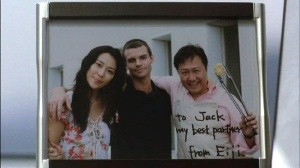
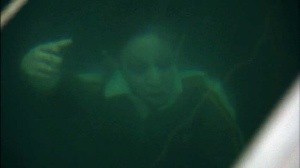
A little different from the rest of the Season 2 episodes, this one was filmed in Japan using a different crew (like Imprint in Season 1), including director Norio Tsuruta. The version presented here is the longer 85-minute theatrical cut (as far as I can tell, the previous release was the shortened version), but don't get too excited: I'm assuming the bulk of the extra footage comes in the achingly slow first half. Jack Miller (Daniel Gillies) is an American lawyer working in Japan, and is still haunted by the drowning death of his brother when the two were kids. Jack is having an affair with Yuri (Yoshino Kimura), the wife of his client Eiji (Audition's Ryo Ishibashi, also a Japanese music star). Eiji clearly knows what's going on, and lures them onto his boat to take them away from safety--where secrets and ghosts are revealed (including some long black hair...shocking!). It's amazing how nearly nothing happens for about 45 minutes, which are almost unbearably slow: slow dialogue, slow reactions, slow movement, slow story and zero surprises in the setup. Once the action picks up on the boat, the film is more enjoyable, even if the story is still somewhat predictable (and some of the character actions and lines are questionable). The Japanese actors aren't always completely comfortable with English, which may account for some of the awkwardness. The ending ventures into slightly silly territory, returning to a slow pace and some odd editing that ruins the overall effect. Good in spots, Dream Cruise is far too long in this version.
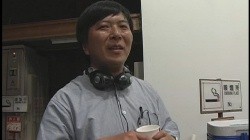 Behind the Scenes Featurettes: Just one entry here, The Making of Dream Cruise (34:47). It's a fun watch that spends a lot of time pondering the differences between American and Japanese horror: "Hollywood horror has a killer in front of you, a killer with an axe in his hands, as if he's saying, 'See? I'm scary.' It's typical of Hollywood horror," says Tsuruta. "The fear in Japanese horror can be found around the edges." (If you ask me, both brands of horror are due for a facelift.) It's clear that Gillies is an immensely devoted, caring and nice guy, although his suggestions may not be something Japanese directors are used to dealing with (Ishibashi notes that in Japan, the director is more responsible for character choices). Lots of raw, behind-the-scenes filming footage is shown, and some time is devoted to how the actors dealt with the language barrier.
Behind the Scenes Featurettes: Just one entry here, The Making of Dream Cruise (34:47). It's a fun watch that spends a lot of time pondering the differences between American and Japanese horror: "Hollywood horror has a killer in front of you, a killer with an axe in his hands, as if he's saying, 'See? I'm scary.' It's typical of Hollywood horror," says Tsuruta. "The fear in Japanese horror can be found around the edges." (If you ask me, both brands of horror are due for a facelift.) It's clear that Gillies is an immensely devoted, caring and nice guy, although his suggestions may not be something Japanese directors are used to dealing with (Ishibashi notes that in Japan, the director is more responsible for character choices). Lots of raw, behind-the-scenes filming footage is shown, and some time is devoted to how the actors dealt with the language barrier.
Audio Commentary: Moderator Perry Martin leads a chat with Gillies and executive producer Garris, who wishfully calls the film "Knife in the Water as a supernatural ghost story." It's a solid listen that expands upon many of the ideas in the behind-the-scenes feature, and Gillies exudes more charm. None of the participants had seen the longer version of the film until watching it for this commentary track, and a lot of the extra footage comes in the opening half.
Other Extras: photo gallery, DVD-ROM script, trailers...but sadly not the shorter cut, which would bump this to two stars.
Another DVDTalk review for Dream Cruise
The TRANSFERS:
All of the shows arrive in anamorphic 1.78:1 transfers. There isn't much variance with each installment. The overwhelming majority of scenes are very soft and dark with dull colors (brown hues seem to frequently take over), with minor grain appearing every so often. A few episodes (like Family and Pelts) have moments of bolder colors, while others use intentionally drab visual schemes: The V Word is extremely dark, while The Black Cat is almost black and white, with a few bursts of color. Dream Cruise has a slightly different look, a tad more cinematic. Overall, the set provides decent if not overwhelming pictures. The audio arrives in 5.1 and 2.0 options, and the 5.1 tracks are solid efforts that make good use of rear channels and effects.
The PACKAGING:
The 13 episodes arrive on 11 discs (two flippers) housed in a pretty cool sturdy skull package that looks damn nice on your shelf. The top half of the skull comes off to reveal the discs, which fit into grooves on one side--leaving them perhaps slightly more prone to mild scratches (no problems with any of mine...just don't drop it). There are no sleeves, no inserts and no booklets, so if you're a little anal about having those, you'll be disappointed.
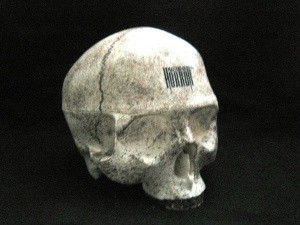
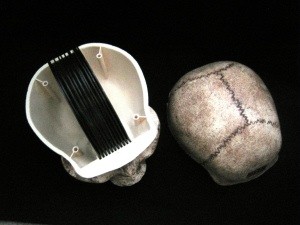
FINAL THOUGHTS:
Like any anthology series, you get hits and misses. This 13-episode set has three entries I loved (The Black Cat, Pelts and Right to Die) and a handful of others that provide a decent watch. Even some of the bad episodes have a slightly satisfying campy appeal. At about $4 a disc (and less if you get it on sale or use a coupon), this is worth adding to your collection if you enjoy mild horror diversions. Recommended.
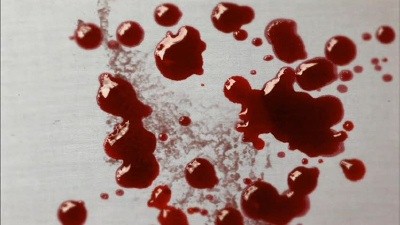
|
| Popular Reviews |
| Sponsored Links |
|
|
| Sponsored Links |
|
|
| Release List | Reviews | Shop | Newsletter | Forum | DVD Giveaways | Blu-Ray | Advertise |
|
Copyright 2024 DVDTalk.com All Rights Reserved. Legal Info, Privacy Policy, Terms of Use,
Manage Preferences,
Your Privacy Choices | |||||||









